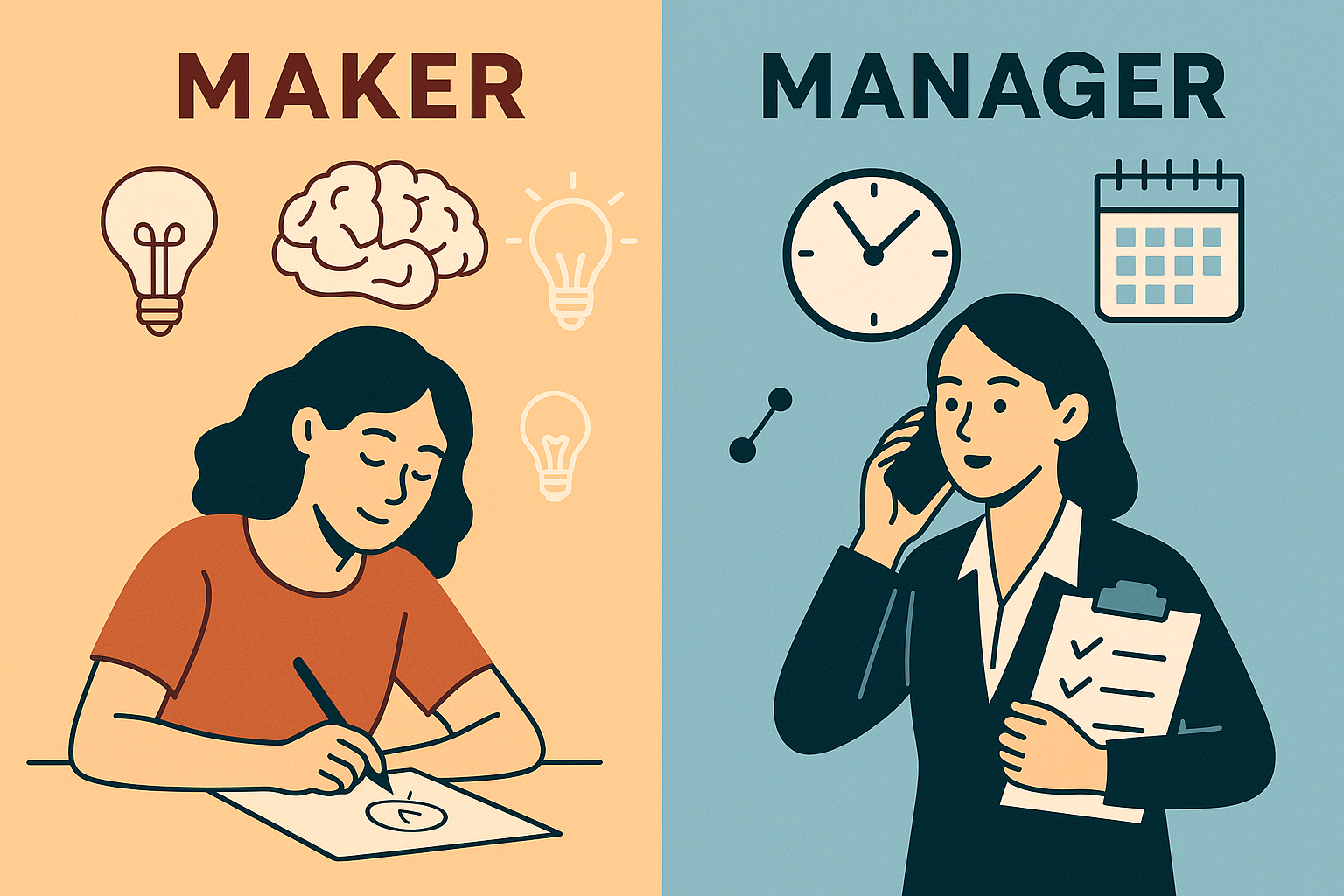In Maker vs. Manager — Part 1, we explored the tension between Maker and Manager time — two very different rhythms that most small business owners live in daily.
If you ever feel like your calendar is pulling you in opposite directions, it’s because it is.
The first step was awareness — noticing when you’re creating versus when you’re managing. Now it’s time to take that awareness and turn it into action by intentionally designing your week so both roles can thrive.
Start with Realistic Structure
You can’t eliminate the need for either role, but you can create space for both. Begin by identifying which days of the week feel naturally creative or naturally administrative.
For many business owners, early in the week (Monday and Tuesday) leans toward Manager mode — full of meetings, check-ins, and communication. By midweek, your brain has often shifted gears and is ready for Maker mode — deeper work like content creation, product development, or client strategy.
The goal isn’t rigid separation. It’s alignment.
Try assigning broad themes to each day. For example:
- Monday/Tuesday: Meetings, decision-making, and client communication
- Wednesday/Thursday: Creation, strategy, and project development
- Friday: Wrap-up, planning, and review
When you theme your days, you reduce the constant context switching that causes fatigue. You’re not just managing tasks — you’re managing your mental energy.
Honor Your Energy, Not Just Your Clock
While structure matters, it’s equally important to notice your personal rhythms.
Are you most creative in the morning? Reserve those early hours for your Maker work — writing, designing, brainstorming. Move calls and emails to later in the day when your energy naturally dips.
If you’re sharper in the afternoon, flip it. The key is to work with your natural flow rather than fighting against it.
You’ll likely discover that honoring your energy is the missing piece of your productivity puzzle. Time-blocking only works when your energy supports what you’ve scheduled.

Create Boundaries Between Modes
Even with clear intentions, transitions can be tricky. Jumping from a creative flow into a client call — or vice versa — can leave you feeling scattered. That’s where buffers come in.
Give yourself 10–15 minutes between major shifts. Step away from your desk, stretch, or grab a drink.
When I need to be both Maker and Manager in a day, I’ll often separate the two with lunch or a quick walk with Miss Lucy (my dog).
For example, I’ve been on client Zooms all morning today and shifted to Maker mode after lunch.
These small breaks act as mental reset buttons, allowing your brain to switch gears without carrying residual tension forward.
Keep It Fluid
The best schedule is the one that evolves with you. Some weeks will require more management; others, more making. Treat your plan as a guide, not a cage.
Check in weekly to see what’s working and what feels heavy. You’ll start to sense when you’ve tipped too far into one mode — that’s your cue to rebalance.
In Part 1, we talked about awareness. In Part 2, it’s about alignment — building a rhythm that supports your creativity and your leadership, even if your team is currently you.
When you stop fighting time and start partnering with it, your business — and your energy — both expand.
